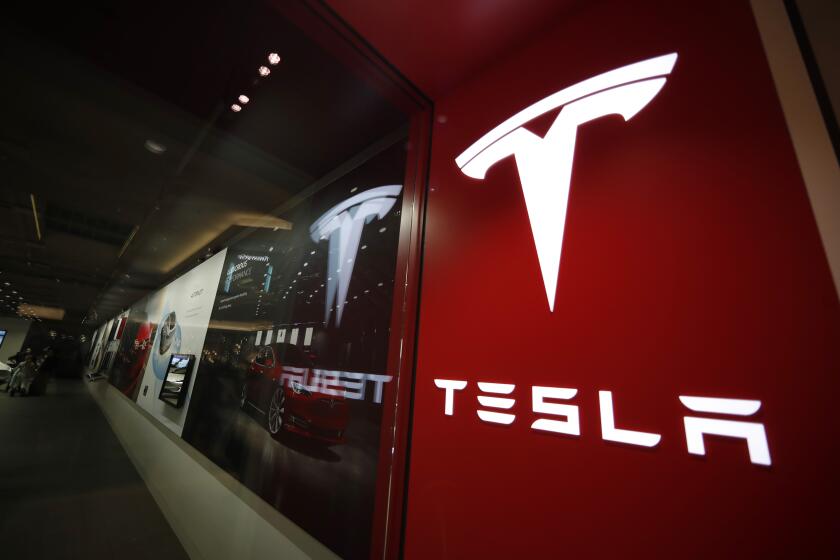Q&A: How will we know driverless cars are safe?
- Share via
Reporting from San Francisco — Anyone looking for a book about driverless cars — smart, wide-ranging, nontechnical, easy to understand — was pretty much out of luck until “Driverless: Intelligent Cars and the Road Ahead” was published in September.
The authors, Hod Lipson and Melba Kurman, have a reputation for clear, succinct writing about emerging technologies. It’s geared toward nonexperts, but scientists, engineers and computer programmers can learn new things too.
Lipson is a roboticist and professor of mechanical engineering at Columbia University, where he directs the Creative Machines Lab.
Kurman, a former product manager and industry analyst at Microsoft, is an author and speaker with a specialty in technology and its effect on our daily lives and the economy.
If driverless cars deliver as promised, that effect will be wide and deep.
The two answered questions from The Times via Skype. Here’s a transcript, edited for length and clarity.
When will driverless cars become commonplace?
Lipson: The answer is not a crisp date. It’s a range that maybe starts in the next five years and ends 30 or 40 years from now, when all the cars are driverless. It’ll be the majority maybe 20 years from now.
Kurman: There are about 250 million active cars in the United States alone. This is going to be a gradual switchover.
If you look at when horses were phased out by engines, there wasn’t a snap transition, there was a phase-in that took several decades.
Lipson: People are often asking when this is going to happen from a technology point of view. The bigger question will be when will the states and the insurance companies approve [driverless cars]. The technology part we’re comfortable saying within the next five to 10 years.
When will people be ready, when will legislation be ready? That’s a question of political policy.
Why have driverless cars suddenly come on the scene?
Kurman: There has been a convergence of several different enabling technologies, including a branch of artificial intelligence called deep learning. We finally have the data and computing power and the sensors able to process inputs fast enough so robots can finally “see.”
The other part is cultural. It’s part Google lighting a fire under the automotive industry. And young people are very comfortable with technology. Many really don’t want to drive much and a generation is coming up now that will be thrilled to give up the wheel.
Your book notes that no one has yet developed a hard safety metric, for either semi-autonomous or driverless cars.
Lipson: The fact is there’s no clear guidelines, no clear goal.
It’s actually pretty simple: Just come up with one figure that will inform people how safe a driverless car is compared to the average human driver.
If the government could say something simple and crisp — for example, when the car is twice as safe as the average human driver, then you don’t need a human driver — so that consumers know the car is safe.
And companies — automotive, software, big and small, start-ups — everybody will know what the target is. Insurance companies will be able to start calculating things. Everybody will be able to move forward.
Kurman: We believe the U.S. federal government should be more proactive about leadership [on a safety metric].
Surveys show many people still think human drivers will be safer than robot cars.
Kurman: Humans are terrible drivers. Every week worldwide an estimated 28,000 people die in car crashes.
Lipson: That’s a huge number. It’s like a nuclear bomb of Hiroshima scale going off every month.
So a safety metric would help these skeptical consumers see the light?
Lipson: We all need to rally behind this. There’s so much benefit behind driverless cars, not just safety.
This is really technology that will enable so many other things to happen: environment, real estate, rearrangement of urban living, transportation for the aged and the disabled. So many new things are going to be enabled by these technologies. It’s really like going to the moon — you have to make sure it happens now.
Twitter: @russ1mitchell




